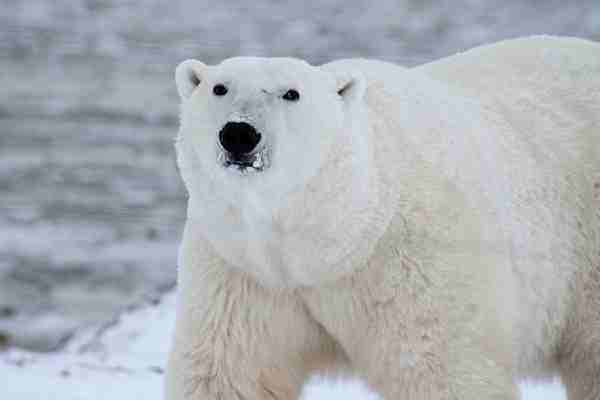The icy realms of our planet, though seemingly desolate, are teeming with life. In the most frigid corners of the Earth, a specialized group of creatures has evolved to not only survive but to thrive in these frozen landscapes. From the formidable Arctic to the remote expanses of Antarctica, animals have honed their adaptations to conquer the extreme challenges presented by life on ice.
Table of Contents
Their resilience and resourcefulness in the face of relentless cold, biting winds, and a seemingly barren environment are awe-inspiring. In this article, we embark on a chilling journey into the heart of these frozen frontiers, exploring the fascinating array of Animals That Thrive in Ice.
From the mighty polar bear to the stealthy Antarctic krill, we will unveil the incredible adaptations and survival strategies that enable these creatures to carve out a niche in these seemingly inhospitable habitats. Join us as we unravel the mysteries of the animals that have conquered the ice-covered realms, showcasing the indomitable spirit of life even in the harshest of conditions.
Brief Overview of the Icy Habitats Around the World:
Icy habitats, primarily the Arctic and Antarctica, represent some of the harshest and most captivating environments on Earth. The Arctic, situated in the northern hemisphere, includes regions like the Arctic Ocean, Greenland, and parts of Canada, Russia, and Scandinavia. It is characterized by frozen ocean, sea ice, and permafrost, supporting a variety of life including polar bears, seals, walruses, and diverse marine organisms.
In contrast, Antarctica, at the southernmost part of the planet, is a vast landmass covered with a thick ice sheet. It houses unique species like penguins, seals, seabirds, and extremophiles, specially adapted to survive in freezing temperatures and the harsh, isolated conditions of the continent. These icy habitats, though distant and challenging, play a critical role in the Earth’s climate system and are vital for understanding the impacts of climate change.
Unique Adaptations for Ice Living:
Animals that call icy habitats home have evolved remarkable adaptations to survive and thrive in these extreme conditions. The polar bear, for example, possesses a thick layer of blubber and a dense fur coat that provide insulation and buoyancy, essential for swimming and hunting in the icy Arctic waters. Penguins have evolved streamlined bodies and specialized flippers, allowing for efficient swimming and maneuvering in the frigid Antarctic seas.
Many marine mammals, like seals and whales, have developed the ability to regulate their body temperature, retaining warmth in cold waters. Additionally, some organisms have antifreeze proteins that prevent the formation of ice crystals within their bodies, ensuring their survival in sub-zero temperatures. These unique adaptations showcase the incredible resilience and evolutionary wonders of life in icy habitats.
Polar Bear (Ursus maritimus):
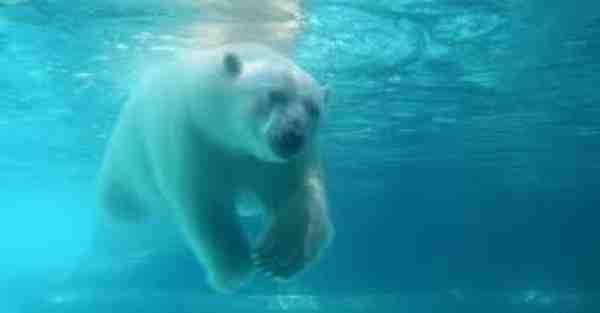
The polar bear, the largest land carnivore on Earth, is an iconic resident of the Arctic ice. These mighty creatures have thick layers of insulating fur and a substantial layer of blubber, crucial adaptations for surviving extreme cold. They are strong swimmers, often seen traversing icy waters, and are expert hunters on the sea ice.
Polar bears primarily prey on seals, relying on breathing holes they maintain in the ice to catch their prey. As apex predators, they play a vital role in maintaining the balance of Arctic ecosystems. However, their survival is increasingly threatened due to the rapid loss of Arctic sea ice caused by climate change, making them a symbol of the urgent need for conservation efforts.
Arctic Fox (Vulpes lagopus):
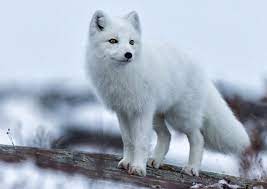
The Arctic fox, often referred to as the “white fox,” thrives in the frigid landscapes of the Arctic and subarctic regions. Their remarkable adaptations include a warm, thick fur coat that changes color with the seasons, providing camouflage in snow-covered environments.
These resourceful omnivores have a varied diet, consuming small mammals, birds, fish, and even carrion. They are well-equipped to endure the harsh Arctic winters, using their dens as shelters against the biting cold. With their small size and adaptability, Arctic foxes are agile hunters, making them essential components of the Arctic food web.
Walrus (Odobenus rosmarus):
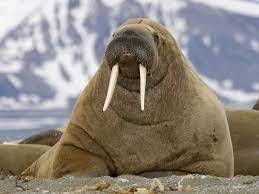
Walruses, characterized by their prominent tusks and distinctive whiskers, are marine mammals that inhabit the icy waters of the Arctic and subarctic regions. These sociable creatures use sea ice as resting platforms and haul-out sites, congregating in large numbers. Walruses primarily feed on benthic invertebrates like clams and snails, which they extract from the seafloor using their sensitive whiskers and powerful tusks.
These tusks also aid in hauling themselves out of the water onto ice floes. Walruses play a crucial role in shaping the Arctic ecosystem, and their conservation is imperative as they face habitat loss and other threats due to climate change.
Seals (Various species):

Seals, including the ringed seal, bearded seal, and Weddell seal, are marine mammals that rely on icy environments for various aspects of their life cycles. They are well-adapted to cold waters and use sea ice as a platform for giving birth, molting, and resting. Seals have specialized limbs and bodies for efficient swimming, with some species possessing adaptations for moving on ice.
These animals are also the primary prey of polar bears and play a significant role in Arctic food webs. Ringed seals, in particular, create and maintain breathing holes in the ice, essential for their survival and that of other Arctic species.
Beluga Whale (Delphinapterus leucas):
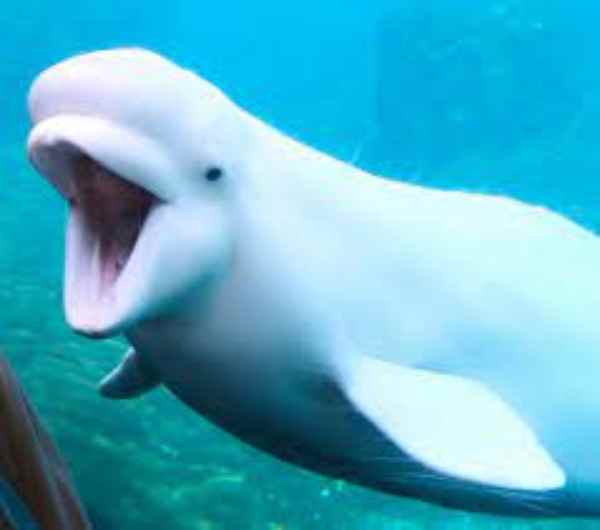
The beluga whale, often called the “white whale,” is uniquely adapted to Arctic and subarctic waters, including icy environments. These sociable marine mammals have distinctive white skin, which helps them blend into the ice-covered seascape. Beluga whales are known for their diverse vocalizations and are sometimes referred to as “sea canaries.”
They navigate the icy waters, where they feed on fish, squid, and various invertebrates. Belugas are also known for their flexibility, with the ability to move their heads in all directions due to unfused cervical vertebrae, an adaptation that aids in capturing prey in confined spaces under ice.
Narwhal (Monodon monoceros):

The narwhal, often referred to as the “unicorn of the sea,” is known for its long, spiral tusks and resides in the icy waters of the Arctic. These elusive whales navigate through icy environments and are typically found in regions covered by sea ice. The narwhal’s tusk, which is actually an elongated tooth, can reach lengths of up to 10 feet and plays a role in various aspects of their lives, from social interactions to sensory functions. Their diet consists mainly of fish and cephalopods, showcasing their adaptations to life beneath the ice.
Adélie Penguin (Pygoscelis adeliae):

Adélie penguins are well-suited to the icy landscapes of Antarctica, where they are a prominent resident. These black and white birds are excellent swimmers and divers, relying on sea ice for access to their food source, mainly krill and fish. They build their nests on rocky areas along the coastline and often have to traverse ice-covered waters to forage for food. Adélie penguins are known for their distinctive appearance and their ability to thrive in one of the coldest and most extreme environments on the planet.
Emperor Penguin (Aptenodytes forsteri):
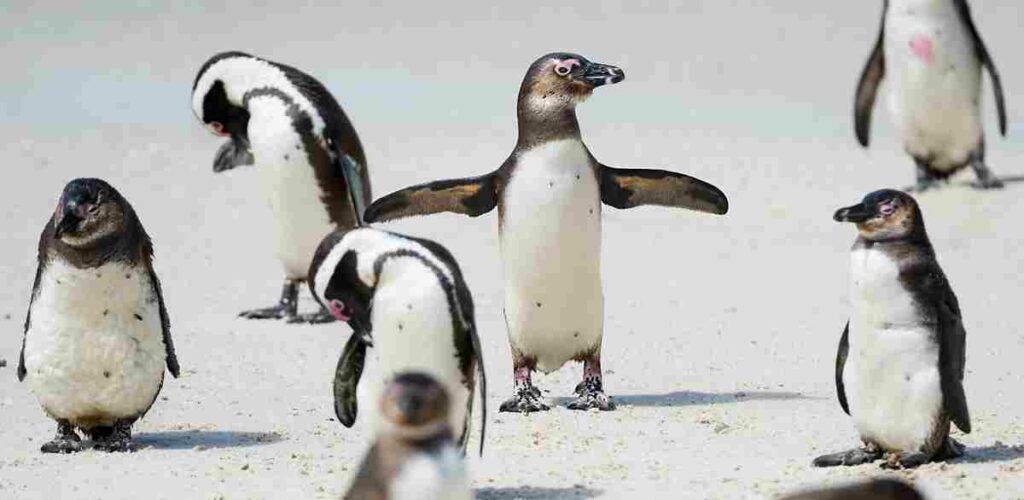
Emperor penguins are another iconic Antarctic species, famous for their remarkable adaptations to icy conditions. They are the largest of all penguin species and have evolved specific behaviors and adaptations to endure the harsh Antarctic winters.
During the breeding season, they gather in large colonies on the ice, with males incubating their eggs on their feet, tucked beneath a flap of skin called a brood pouch, to protect them from the extreme cold. Emperor penguins are expert divers, foraging for fish and krill beneath the ice, and their ability to thrive in the frigid Antarctic environment is a testament to their resilience.
Arctic Hare (Lepus arcticus):

The Arctic hare, an elusive and resilient creature, thrives in the icy landscapes of the Arctic tundra. These hares, boasting a seasonal white coat for camouflage in the snow and a blueish hue in the summer, are well-adapted to the extreme temperatures.
They have a specialized circulatory system that minimizes heat loss and a dense fur coat for insulation. Arctic hares mainly consume woody plants, mosses, and lichens, utilizing their strong hind legs to dig through the snow in search of vegetation. Their ability to survive in the icy terrain of the Arctic highlights their unique evolutionary adaptations and their crucial role in the Arctic ecosystem.
Lemming (Various species):
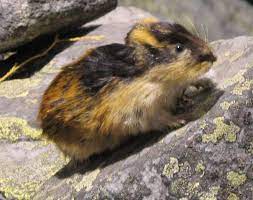
Lemmings, small rodents inhabiting the Arctic and subarctic regions, showcase remarkable adaptability to cold and icy environments. These creatures have dense fur that provides insulation against the chill, and their diet primarily consists of leaves, roots, seeds, and sometimes insects.
Lemmings are known for their cyclic population dynamics, with periods of population explosions known as lemming years. During these phases, they often migrate in large numbers, displaying both migration and dispersal behaviors across icy landscapes. Despite their small size, lemmings play a significant role in the Arctic food web, influencing the population dynamics of predators like owls, foxes, and stoats.
Conservation and Environmental Challenges:
Icy habitats and their inhabitants face significant conservation challenges, primarily driven by climate change. Rising global temperatures are causing the rapid loss of sea ice in the Arctic and the collapse of ice shelves in Antarctica, profoundly affecting the animals and ecosystems that depend on these ice formations. Loss of habitat, altered predator-prey dynamics, and disrupted food chains are immediate threats.
Pollution, overfishing, and disturbances from human activities, such as tourism and shipping, further exacerbate the environmental challenges. Conservation efforts are crucial to mitigate these impacts, including creating marine protected areas, regulating sustainable fishing practices, reducing greenhouse gas emissions, and fostering international cooperation for the preservation of these critical icy habitats and their unique biodiversity.
Final Words:
Icy habitats offer a glimpse into a world of resilience and adaptation, where life triumphs against the odds. From the Arctic’s frozen tundra to the vast icy expanses of Antarctica, these environments, though harsh, are essential for the planet’s ecological balance. As we face the pressing realities of climate change, it becomes paramount to protect these regions and their inhabitants.
Our understanding and appreciation of the unique adaptations and delicate ecosystems within these icy realms must drive global efforts towards responsible stewardship and conservation. Preserving these habitats isn’t just a matter of protecting charismatic wildlife; it’s about safeguarding the delicate balance of our Earth’s interconnected systems and ensuring a sustainable future for generations to come.
Reference:
- https://ocean.si.edu/ecosystems/poles/animals-ice
- https://www.playstories.com/blog/curiosities-animals-that-live-on-ice/
- https://www.coolantarctica.com/Antarctica%20fact%20file/arctic_animal.php
A motivated philosophy graduate and student of wildlife conservation with a deep interest in human-wildlife relationships, including wildlife communication, environmental education, and conservation anthropology. Offers strong interpersonal, research, writing, and creativity skills.

